10 Iconic Chair Designs That Continue to Make History
These chairs are more than furniture—they’re pieces of art and testaments to a long history of design.
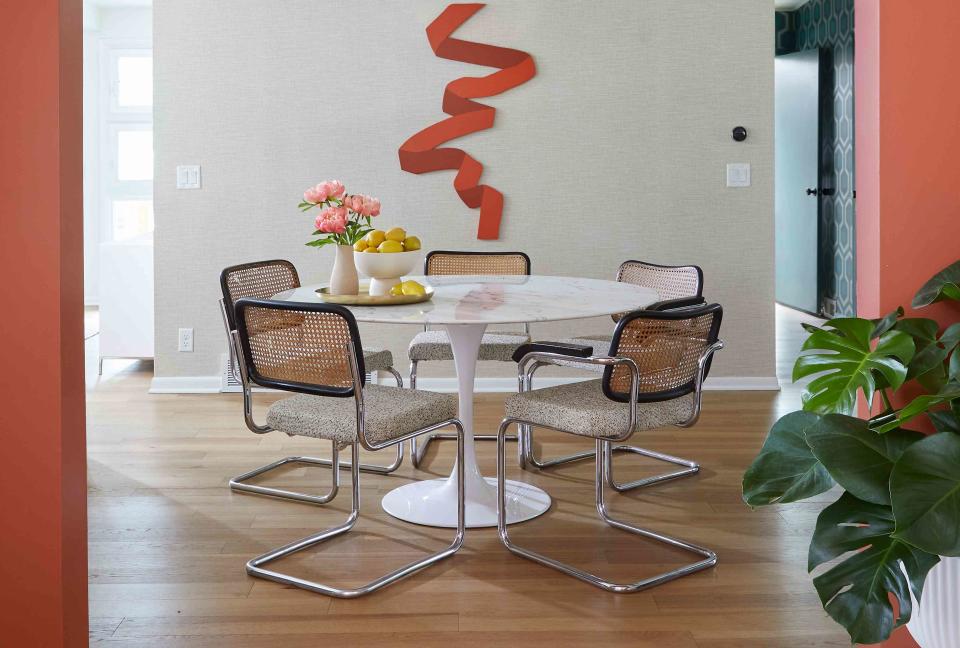
Kim Cornelison
The perfect chair can make a room sing, offering both comfort and style. Some of the most iconic chairs are style statements all their own, instantly recognized and often with memorable names. “They are coveted by homeowners all over the world due to versatility, timelessness, but above all, their overall good design,” says Dr. Rosa Otero, the curator for the SIDE Chair Library and an associate professor of design at Salem College.
“The 1940s and 1950s was a prolific period in chair design in the U.S.,” says Otero. Interior furnishings saw dramatic changes during that time, “not only addressing aesthetics and innovation but also comfort,” she says. And while iconic seating isn't limited to the U.S. or those decades, a great number of chairs created during that period are still produced today, and they make up a large portion of this list.
Whether you’re digging into the history of interior design or simply looking for inspiration for that perfect seat, these are 10 can't-miss chair designs you should know.
Navy Chair, 1944
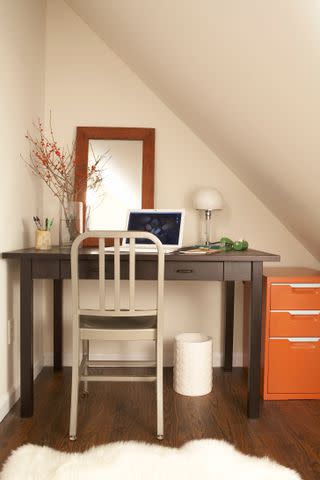
Michael Partenio
Aptly named, the Navy chair was introduced in 1944 for use on ships and submarines. Constructed with aluminum through a complex process, the result is a chair that Otero characterizes as “strong, durable, and light.” It’s touted to last 150 years, making this classic seat a practical, long-term investment. “Its versatility transcends time and settings,” says Otero, explaining, in part, why the Navy chair has been duplicated by other manufacturers.
Designed by American Wilton C. Dinges and made by EMECO, the Navy has been used in residential and commercial spaces for decades, and has evolved to include multiple sizes and colors. A great choice for both indoor and outdoor dining, it’s also common to find the Navy chair in its barstool form at the kitchen island.
Bergère Chair, 18th Century

Helen Norman
“I feel the Bergère chair is a sometimes forgotten icon in the world of chairs,” says interior designer Suzan Wemlinger. Dating back to the 1700s, the French Bergère (pronounced bare-zhair) is a historically formal chair. Elegantly upholstered with an exposed wood frame, the original style had a shapely back and fine textiles. It has since evolved to include versions with a simpler profile and fabrics.
Not relegated exclusively to formal sitting rooms, the Bergère is at home in living spaces and even bedrooms, especially when paired with a matching ottoman. The sophisticated chair remains a natural complement to traditionally designed spaces, but Wemlinger also sees the Bergère as approachable for newer aesthetics as well. “Having been around for over three hundred years, it’s not going anywhere—it’ll just have a new iteration,” says Wemlinger. She sees it as a perfect chair to add that “touch of whimsy” to a space by updating its look with informal fabrics and colors.
Egg Chair, 1958
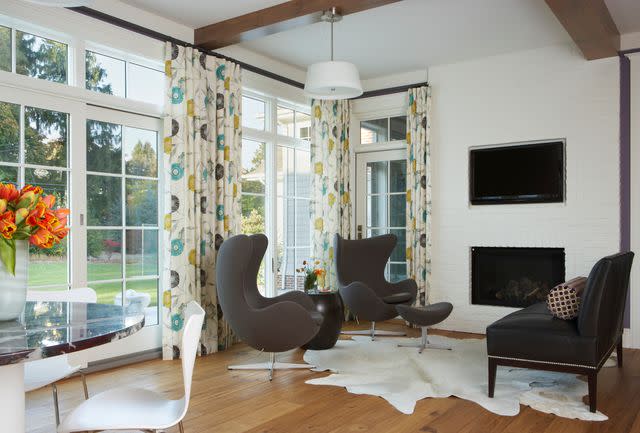
Beth Singer
Danish architect Arne Jacobsen created the Egg chair as part of his commission to design the entire SAS Royal Hotel in Copenhagen. The Egg is a modern take on the more traditional wingback chair. The curvy, oversize shape and swivel base were intended to create privacy for guests of the hotel. It also tilts back for added comfort. With its large, comfortable design, the chair is frequently found in modern and contemporary living spaces.
Produced by Fritz Hansen since it was first introduced, the Egg chair is available in fabric and leather upholstery, each in multiple shades. A coordinating footstool is also available.
Tulip Chair, 1956
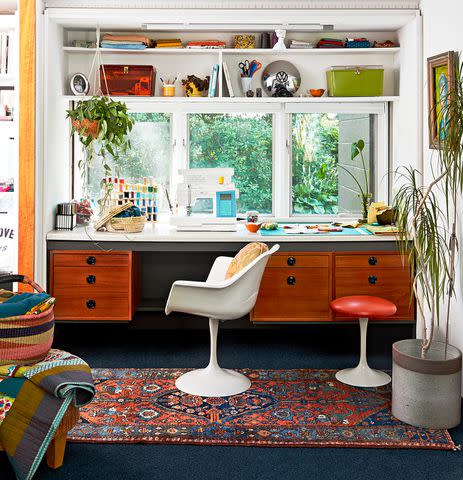
“Eero Saarinen's Tulip Chair is probably one that people instantly recognize as being iconic, but are not aware that the original design was by this world-famous architect,” says Wemlinger. An architect and designer, Saarinen is still known today for a number of furnishings, buildings, and monuments including the Gateway Arch in St. Louis.
Introduced in 1956 and manufactured by Knoll, the Tulip Chair is one of the first successful one-legged chairs. "This piece is futuristic and classic, as well as mass-produced and organic,” says Otero. The chair blossoms from a base reminiscent of a stemmed wine glass, a look that’s both playful and stylish.
According to Otero, the Tulip Chair is a natural fit for dining rooms and a stylish option for offices. Wemlinger notes that the modern lines can fit comfortably in any space, whether that’s among other modern pieces or juxtaposing a vintage setting. Part of what’s made this eye-catching chair a classic is its fluidity. “No one is quite sure how to take this chair: is it fun and quirky or does it demand attention in a more formal setting?” says Wemlinger.
Cesca Chair, 1928
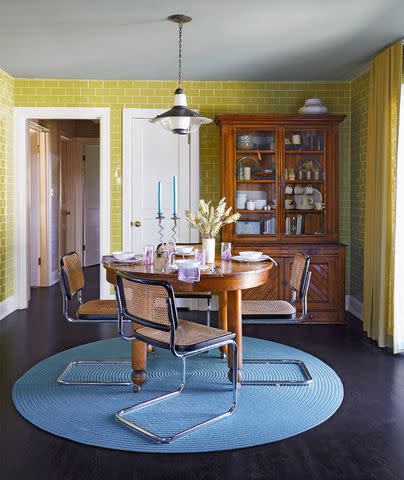
With the recent resurgence of cane and rattan furniture accents, it’s no surprise we’ve been seeing a lot of the Cesca chair, designed by Hungarian architect and furniture designer Marcel Breuer. Although its cantilevered design might make the Cesca feel modern, it has actually been in production since 1928, first by Thonet and now by Knoll. The tubular steel frame was inspired by a bicycle, and Breuer first used it a few years earlier with his Wassily chair, an iconic piece of the Bauhaus movement.
The chair is not traditionally supported by four legs, but instead has an open back and a frame of two front legs that become its base. The cantilevered frame allows the seat some bounce, and visually offers a crisp contrast to the bentwood and cane seats and back. Today, Cesca chairs are also available with upholstered back and/or seat options. It’s an effortless selection for nearly any dining table, whether traditional or modern, round or square.
Eames Lounge Chair, 1956
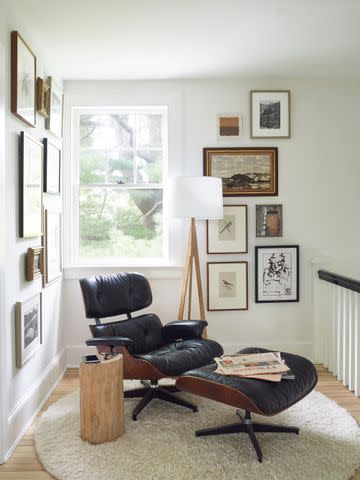
Tria Giovan
“Classic, sophisticated, and yet comfortable” is how Otero describes the legendary chair and ottoman designed by Charles and Ray Eames. Designed in 1956, the 670 (more commonly known as the Eames Lounge Chair) has been produced by Herman Miller since 1957. Known for their architecture and furniture design, including a number of other well-recognized chairs, the American Eames duo wanted the chair to have “the warm, receptive look of a well-used first baseman’s mitt.”
The Eames Lounge Chair was instantly recognized as a designer piece, and it’s still highly desirable today. “The Eames lounger is probably one of the most copied chairs in the world—the soft leather body along with the curve design of the wooden frame invites one in,” says Wemlinger.
“Including this chair in a room elevates the character of any space while inviting users to lounge and relax—perfect for family and study rooms,” adds Otero.
Related: How Modernism Became an Iconic Decorating Style During the 1940s
Louis Ghost Chair, 2002

Created by French designer and architect Philippe Starck, the Louis Ghost chair has been produced by Kartell since 2002. It may be the newest chair on the list, but its original inspiration has stood the test of time: the 18th-century Louis XVI armchair. While a traditional shape, the Louis Ghost chair is utterly modern thanks to its plastic construction that makes it both lightweight and transparent.
Entirely comfortable in contemporary spaces, the chair shines in traditional spaces, from formal dining rooms to dressing tables, where its sleek modernity contrasts more ornate and opulent details. Made from outdoor-friendly materials, it’s a stunning option to elevate outdoor living, too. Available in the iconic clear crystal finish, it’s also produced with multiple transparent colors, as well as some opaque but glossy hues.
Wishbone Chair, 1949
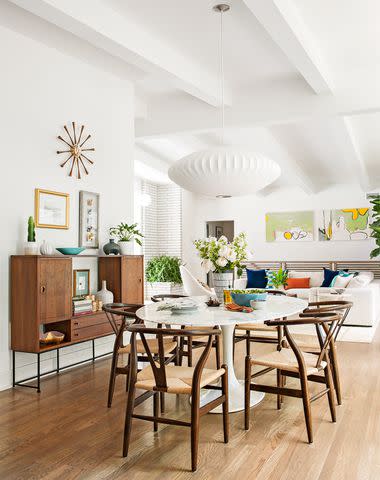
Anthony-Masterson
Danish designer Hans J. Wegner found inspiration for the Wishbone Chair, as well as other chairs he designed, in depictions of Danish merchants on Ming chairs. The Wishbone Chair earned its name from the Y-shaped backrest. With a hardwood frame and paper cord seat, it’s sleek and simple without being stark.
Manufactured by Carl Hansen & Søn since it was first produced in 1950, the Wishbone Chair was originally made with teak. Today, it’s available in multiple colors and finishes. The Wishbone Chair is still found at dining tables of all shapes and in intentionally chosen shades to complement or contrast the table. Its subtle style makes it particularly popular, whether as an authentic antique or a reinterpretation, in midcentury revival looks.
Womb Chair, 1948
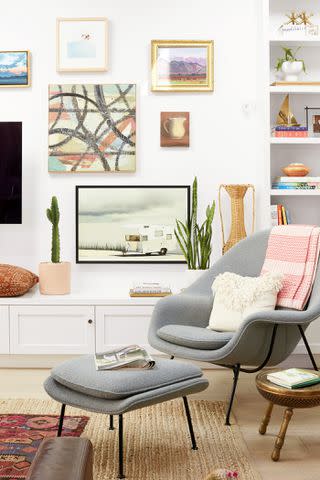
Another iconic furnishing designed by Eero Saarinen, the Womb Chair emerged in 1948. The design was prompted by Florence Knoll’s request—Knoll is still the manufacturer—for a chair that you could comfortably curl up in. Saarinen spent time observing how people sit in and use chairs, considering both the look and ergonomics of the chair before coming up with its sweeping design intended to offer a sense of security. “It’s a cozy and wonderful reading chair that accommodates multiple seating positions and users of different sizes,” says Otero. The molded shape allows room for various positions as well as space for propping books. The Womb Chair has an ottoman, too, for increased flexibility and comfort.
Today, the Womb Chair is often found in living spaces and bedrooms, a focal point as much as a practical piece of furniture. “Its generous size and unique femininity make this piece the highlight of any space,” says Otero.
Poäng Armchair, 1976
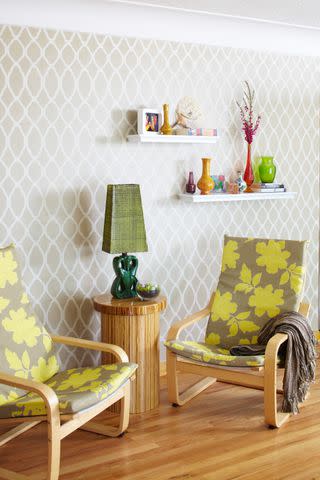
Adam Albright
A ubiquitous chair with an approachable price, you’re as apt to find the Poäng in a bedroom as a den, living room, reading nook, or even nursery. Japanese designer Noboru Nakamura created the Poäng for IKEA in 1976. It was made of tubular steel but changed to an all-wood frame in the 1990s, the same time the name changed from Poem to Poäng. The cantilevered design sports a cushioned seat, and multiple wood, fabrics, and colors have been available over the years. An ottoman is also available, and the Poäng has been developed into a rocking chair style as well.
Check Out the Stylemaker Issue Featuring Drew Barrymore
For more Better Homes & Gardens news, make sure to sign up for our newsletter!
Read the original article on Better Homes & Gardens.

